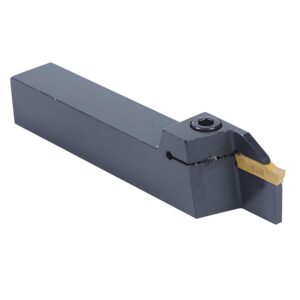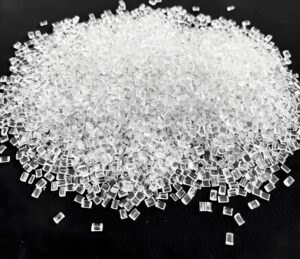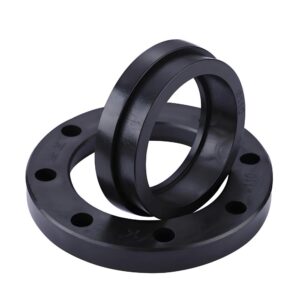Aluminum is a versatile and widely used metal in industries ranging from aerospace to automotive, construction, and beyond. Its unique properties, such as lightweight strength, corrosion resistance, and excellent thermal conductivity, make it a go-to material for countless applications. One critical property that defines its usability in various manufacturing processes is its melting point. This blog dives deep into the melting point of aluminum, exploring its significance, variations, influencing factors, and practical applications in a way that’s approachable and informative for readers, whether they’re industry professionals or curious enthusiasts.
What Is the Melting Point of Aluminum?
The melting point of aluminum is a fundamental characteristic that determines how the metal behaves under high temperatures. For pure aluminum, the melting point is approximately 660.32°C (1220.58°F). This relatively low melting point, compared to other metals like steel or titanium, makes aluminum easier to process in applications such as casting, forging, and welding. However, the exact temperature at which aluminum transitions from a solid to a liquid state can vary slightly depending on its purity and whether it’s alloyed with other elements.
When aluminum is heated, it undergoes a phase change from solid to liquid without passing through an intermediate state. This sharp transition is typical for pure metals. However, in real-world applications, aluminum is rarely used in its pure form. Instead, it’s often combined with other elements to form alloys, which can alter its melting behavior. Understanding the melting point of aluminum is crucial for industries that rely on precise thermal management during manufacturing processes.
Importance of Aluminum Melting Temperature
The melting temperature of aluminum plays a pivotal role in its industrial applications. Its relatively low melting point compared to metals like steel (which melts at around 1370°C or 2500°F) makes aluminum an energy-efficient choice for manufacturing processes. This lower energy requirement translates to cost savings and reduced environmental impact, which is a significant consideration for industries aiming to optimize production while maintaining sustainability.
In addition to energy efficiency, the melting temperature of aluminum affects the design and operation of equipment used in processing. Furnaces, crucibles, and molds must be designed to withstand the temperatures required to melt aluminum while maintaining structural integrity. Furthermore, the melting temperature influences the choice of alloy for specific applications, as different alloys have slightly different melting ranges, which can affect their performance in high-temperature environments.
Energy Efficiency in Manufacturing
One of the standout benefits of aluminum’s melting point is its contribution to energy-efficient manufacturing. Processes like die casting, extrusion, and forging rely on heating aluminum to its molten state. Because aluminum melts at a lower temperature than many other metals, manufacturers can use less energy to achieve the desired results, reducing operational costs and minimizing the carbon footprint of production.
Thermal Management in Processing
Proper thermal management is essential when working with aluminum. If the temperature exceeds the melting point by too much, it can lead to issues like excessive oxidation or material degradation. Conversely, insufficient heating can result in incomplete melting, leading to defects in the final product. Understanding and controlling the melting temperature ensures consistent quality in manufactured parts.
Aluminum Alloy Melting Point Range Table
Aluminum alloys are created by combining aluminum with elements like copper, magnesium, silicon, or zinc to enhance specific properties such as strength, corrosion resistance, or machinability. These alloys often have a melting range rather than a single melting point because the alloying elements create a mixture that melts over a temperature range. Below is a detailed look at the melting point ranges for common aluminum alloys, divided into wrought and cast categories.
Wrought Aluminum Alloys
Wrought aluminum alloys are mechanically worked into shapes like sheets, plates, or extrusions. They are typically used in applications requiring high strength and formability. The table below outlines the melting point ranges for some common wrought aluminum alloys:
| Alloy Series | Common Alloys | Melting Point Range (°C) | Melting Point Range (°F) |
| 1xxx (Pure Al) | 1100, 1200 | 643–657 | 1190–1215 |
| 2xxx (Cu) | 2024, 2011 | 502–638 | 935–1180 |
| 3xxx (Mn) | 3003, 3004 | 629–654 | 1165–1210 |
| 5xxx (Mg) | 5052, 5083 | 607–649 | 1125–1200 |
| 6xxx (Mg, Si) | 6061, 6063 | 582–652 | 1080–1205 |
| 7xxx (Zn) | 7075, 7050 | 477–635 | 890–1175 |
These ranges reflect how alloying elements lower or broaden the melting point compared to pure aluminum. For example, the 7xxx series, which contains zinc, has a significantly lower melting range, making it suitable for specific high-strength applications but requiring careful thermal control.
Cast Aluminum Alloys
Cast aluminum alloys are designed for casting processes, where molten aluminum is poured into molds to create complex shapes. These alloys often contain higher amounts of alloying elements like silicon to improve fluidity and castability. Below is a table of common cast aluminum alloys and their melting point ranges:
| Alloy Series | Common Alloys | Melting Point Range (°C) | Melting Point Range (°F) |
| 2xx.x (Cu) | 201.0, 206.0 | 510–640 | 950–1184 |
| 3xx.x (Si, Mg) | 356.0, 319.0 | 555–625 | 1030–1157 |
| 4xx.x (Si) | 443.0, 413.0 | 557–624 | 1035–1155 |
| 5xx.x (Mg) | 514.0, 520.0 | 560–620 | 1040–1150 |
| 7xx.x (Zn) | 710.0, 712.0 | 480–640 | 895–1184 |
The broader melting ranges in cast alloys are due to their higher alloying content, which affects their behavior during casting. For instance, silicon-rich alloys (4xx.x series) have excellent fluidity, making them ideal for intricate castings.
Factors Affecting the Melting Point of Aluminum
Several factors influence the melting point of aluminum, particularly when it’s used in alloyed form. Understanding these factors is essential for optimizing manufacturing processes and ensuring the quality of the final product.
Alloy Composition
The most significant factor affecting the melting point is the composition of the alloy. Elements like copper, magnesium, silicon, and zinc can lower the melting point or create a melting range rather than a single point. For example, adding silicon to aluminum reduces the melting point and improves fluidity, which is why silicon-rich alloys are popular in casting.
Purity of Aluminum
Pure aluminum has a precise melting point of 660.32°C, but impurities or alloying elements can alter this. Even small amounts of contaminants, such as iron or sulfur, can lower the melting point slightly or cause a range of temperatures over which the metal melts. In high-purity applications, such as electronics, manufacturers often use nearly pure aluminum to maintain consistent thermal properties.
External Conditions
External factors like pressure and atmospheric conditions can also influence the melting point, though their impact is typically minimal in standard industrial settings. For example, extremely high pressures can slightly increase the melting point, while the presence of an inert atmosphere (like argon) during melting can prevent oxidation and maintain consistent melting behavior.
Heating Rate and Equipment
The rate at which aluminum is heated can affect how it behaves near its melting point. Rapid heating may cause uneven melting or localized overheating, while slow, controlled heating ensures uniform melting. The type of equipment used, such as induction furnaces or gas-fired crucibles, also plays a role in maintaining precise temperature control.
Applications Where Melting Point Matters
The melting point of aluminum is a critical factor in numerous industrial applications. From casting intricate components to welding lightweight structures, understanding and controlling the melting temperature ensures high-quality results.
Casting and Molding
In die casting and sand casting, aluminum’s low melting point allows for efficient production of complex parts, such as engine blocks, aerospace components, and consumer goods. The ability to melt aluminum at relatively low temperatures reduces energy costs and enables the use of a wide range of molds and dies.
Welding and Joining
Welding aluminum requires precise control of heat to avoid exceeding the melting point, which can weaken the material or cause defects. Processes like TIG (Tungsten Inert Gas) and MIG (Metal Inert Gas) welding rely on understanding the melting point to achieve strong, clean welds.
Extrusion and Forging
In extrusion and forging, aluminum is heated to just below its melting point to make it malleable. This allows manufacturers to shape the metal into profiles, rods, or other forms without fully melting it. The melting point serves as a critical threshold to avoid over-processing.
Recycling Aluminum
Aluminum’s low melting point makes it highly recyclable. During recycling, scrap aluminum is melted down and reformed into new products. The energy efficiency of this process, driven by the low melting point, makes aluminum one of the most sustainable metals for industrial use.
Aerospace and Automotive Industries
In aerospace and automotive applications, aluminum’s melting point influences the choice of alloys for components like engine parts, airframes, and chassis. Alloys with specific melting ranges are selected to withstand high operating temperatures while maintaining structural integrity.
Practical Considerations for Working with Aluminum
When working with aluminum, manufacturers must consider several practical aspects related to its melting point. These include selecting the right furnace, ensuring proper temperature monitoring, and choosing alloys that match the application’s thermal requirements. For example, in high-temperature environments, alloys with higher melting ranges may be preferred to prevent softening or deformation.
Safety is another key consideration. Molten aluminum can react violently with water or certain chemicals, leading to explosions or splashes. Proper handling procedures and protective equipment are essential to ensure a safe working environment.
Precionn’s Expertise in Aluminum Machining
For industries that rely on aluminum’s unique properties, partnering with an experienced machining company is essential to achieve high-quality results. Precionn, a leader in the machining industry, specializes in delivering precision-engineered aluminum components for international customers. With a deep understanding of aluminum’s properties, including its melting point and alloy variations, Precionn offers tailored solutions for applications ranging from aerospace to automotive and beyond. By leveraging advanced machining techniques and rigorous quality control, Precionn ensures that every component meets the exacting standards of its global clientele. Visit Precionn’s website to learn more about how their expertise can elevate your next project.




